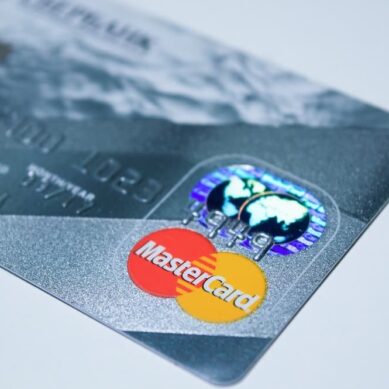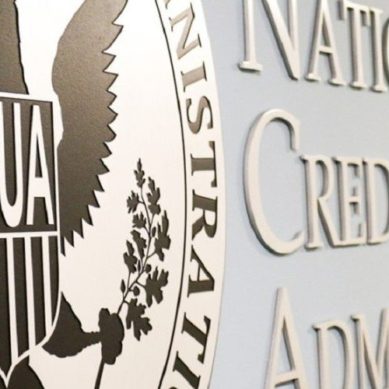Welcome back to Financial Literacy week where I predict the future based on what I write about. Last week, I covered bear and bull markets and how markets in general affect the credit union industry. Lo and behold, this week has been an absolute rollercoaster in the markets, approaching bear territory at times only to rebound (and dip again). So today, I will cover get rich quick schemes…
Laughing to keep the tears away aside, what I would really like to cover today is the enigma that is cryptocurrency. Though it has been around a long time, it only entered the zeitgeist in the last 6 or 7 years. And it is still a confusing jumble of currencies and ETFs and blockchain. So I will do my best to break it down into its base parts, explain what all the fuss is about, and how it fits into the world of credit unions.
Blockchain is at the foundation
Before we can fully understand cryptocurrencies like Bitcoin, we have to first understand the underlying technology that has made it possible: blockchain.
The easiest way to understand blockchain is that it’s a transaction ledger, like you maintain for your credit union members. Except where your credit union’s ledger is centralized, blockchain is a decentralized and distributed ledger of transactions. In other words, it’s a transaction ledger that’s recorded and shared among a large network of peers. Each “block” contains transactional data which is then added to the end of the “chain” of transactions chronologically. Since that chain of blocks is shared across a decentralized network, it makes fraud extremely difficult, as there’s no single source to target for changing a prior transaction.
We see this technology most widely used for transactional ledgers such as with cryptocurrencies, but its application is wider than that, and can be used to maintain a secure record of other kinds of data exchange.
Enter Bitcoin, the original and most valuable coin
The history of Bitcoin (BTC) is shrouded in mystery. What we know is that it was created by somebody who went by the moniker Satoshi Nakamoto, or was that somebodies? To this day it is unknown whether the pseudonym represents one individual or a group of individuals wanting to shake up the established currency order. Fun side note: 1 bitcoin = 100 million satoshis—said another way, 1 satoshi is 0.00000001 BTC, the smallest denomination.
Bitcoin emerged following the financial crisis in 2008. Nakamoto had become disillusioned with the current system, feeling there were too many parties involved in online transactions. Using the example of a cash transaction, it’s a very simple exchange of cash for product between a buyer and seller. No further intervention is required. But with the rise of credit cards and other digital payment solutions, many intermediaries facilitate the transactions, resulting in fees and surcharges applied.
But if a decentralized, secure digital currency existed that could play the role of a digital cash transaction, it might change things. By implementing blockchain technology to manage the ledger of transactions and control the supply of new bitcoins released into the ecosystem in a process called mining, Bitcoin could operate as a secure, anonymous transaction medium without the intervention of governments or major corporations. And since the currency is not tied to a central bank’s currency, its users could define its value.
In one of the most infamous and earliest commercial transactions involving BTC, a bitcoin forum user offered and paid 10,000 BTC to have somebody buy and deliver him two pizzas. What was then worth $41, at its peak value relative to the dollar, those two pizzas cost over $1 billion.
Why so many different cryptocurrencies?
Though Bitcoin took years to gain traction, its success has led to the rise of thousands of other cryptocurrencies. Where BTC seeks to serve as a medium of exchange, many others have arisen to serve very specific functions, often called utility tokens, such as Ethereum. Stablecoins like USDC maintain a 1:1 ratio with the U.S. dollar, resulting in something with the stability of a fiat currency to the technological benefits of blockchain.
Thanks to the volatility and tremendous growth of cryptocurrencies like bitcoin, ethereum, and others, it has also lead to the rise of memecoins, like Dogecoin (DOGE), giving its traders an avenue for speculative trading. A get rich quick scheme that’s extremely risky. For example somebody who bought 10,000 DOGE at $0.01 per coin in 2021 would see that $100 investment now worth $1,600.
And then there are NFTs (non-fungible tokens)—we won’t even get into those…
In all, though some will attempt to dismiss cryptocurrencies as mostly speculative nonsense—and many coins have arisen as an attempt to generate massive wealth quickly by catching the next big wave—the underlying technology is sound with a great deal of potential. But where does that leave credit unions in all of this? Is crypto a threat?
Credit unions and crypto
As with any emerging technology that affects the financial industry, there will be a lot of confusion and speculation regarding the scope of its impact on credit unions.
As members become increasingly aware of cryptocurrencies and their potential (primarily) as an investment option, credit unions have to decide for themselves whether they want to steward their members in this new journey. Credit unions being deeply regulated might find the idea of incorporating some sort of cryptocurrency (also called digital asset by NCUA) solution for members daunting or too risky.
However, NCUA does not strictly prohibit credit unions from working with third-party service providers seeking to connect members with digital asset services. The NCUA does on the other hand prevent federally-chartered, federally-insured credit unions from serving as custodians of digital assets and cryptocurrencies, which are not covered by the share insurance fund. State-chartered credit unions might be able to though, provided they follow all existing rules and regulations.
This prohibition, however, should not come as a surprise to credit unions, who have previously connected members with investment services. Per the NCUA’s website: “The NCUA’s share insurance does not apply to financial products held at investment companies or investment brokers, such as stocks, bonds, money market mutual funds, other types of securities, commodities, or cryptocurrencies.”
As a young technology that the government is only beginning to wrap its head around, how cryptocurrency will be managed moving forward is a bit of a speculative game of its own. As with others, credit unions should perform all the due diligence and risk assessments they might perform for other third parties before connecting with a crypto service. But that’s not to say it might not be a worthwhile investment in serving the needs of members.
That wraps it up for today. Though we only scratched the surface of crypto and its often confusing nature, I hope this has provided a base understanding of the technology, its origins, and its future role within the credit union space.























































